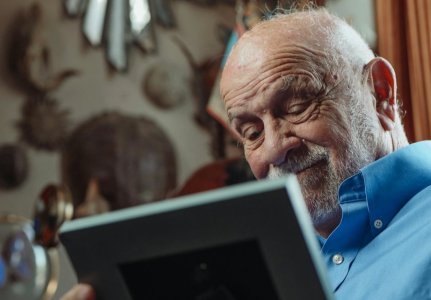Can community really fight loneliness? This quiet experiment offers answers
By
Veronica E.
- Replies 0
Across the country, more and more headlines highlight the challenges of loneliness among older adults.
While the idea of “aging in place” is appealing, the reality can sometimes mean living apart from neighbors, friends, or meaningful activities.
What if there were a way to remain in familiar surroundings while still feeling connected and supported?
New York State has been testing such an approach for years, and recent results suggest it may hold powerful lessons for the future.
The model is simple, cost-effective, and already transforming thousands of lives.

A Naturally Occurring Retirement Community, or NORC, isn’t a planned senior housing development.
Instead, it’s a neighborhood, apartment building, or complex where a large number of residents have simply grown older in place.
Recognizing the unique opportunities these communities presented, New York State built programs to deliver services directly where older adults already live.
The goal: to support independence while strengthening social connection.
The New York State Office for the Aging (NYSOFA) recently released findings from a survey of 2,262 adults aged 60 and older across 43 NORCs.
Using the UCLA 3-item Loneliness Scale, researchers tracked changes in participants’ sense of companionship and belonging.
The improvements were significant:
In short, NORCs are helping older adults feel far less lonely and far more engaged.
Social isolation carries steep costs, both personal and financial.
The CDC estimates loneliness adds $6.7 billion annually to Medicare costs and contributes to $406 billion in broader economic impact.
Studies also show that chronic isolation raises the risk of early death to levels comparable with smoking a pack of cigarettes daily.
Against this backdrop, the success of NORCs stands out as both a public health achievement and a potential cost-saver.
The strength of the model lies in its mix of practical and social supports, all delivered within the community itself:
By meeting people where they live, NORCs preserve independence while building stronger connections.
The average annual cost per participant in a NORC program is just $500.
Compare that with $159,000 for a single nursing home bed, and the potential savings are clear.
Beyond financial efficiency, these supports reduce hospitalizations, emergency room visits, and Medicaid reliance, while improving quality of life.
The documentary Aging in Community: A New York First Model shines a spotlight on NORCs in Findley Lake, Queens, and East Harlem.
Residents featured in the film describe rediscovering purpose, friendship, and joy through community activities and supports.
Their stories illustrate what the data suggests—connection and care can thrive outside of institutions.
New York currently leads the way with 43 state-funded NORCs, but the idea is gaining traction elsewhere.
With America’s aging population, more communities may begin to explore similar programs.
It raises the question: could your own neighborhood evolve into a NORC with the right support?
Read next:

At The GrayVine, we believe aging should come with more connection, not less. What kinds of community supports would make the biggest difference in your life—or in the life of someone you care about?
While the idea of “aging in place” is appealing, the reality can sometimes mean living apart from neighbors, friends, or meaningful activities.
What if there were a way to remain in familiar surroundings while still feeling connected and supported?
New York State has been testing such an approach for years, and recent results suggest it may hold powerful lessons for the future.
The model is simple, cost-effective, and already transforming thousands of lives.

Strong communities help reduce loneliness and improve quality of life for seniors. Image Source: Pexels / Kindel Media.
What exactly is a NORC?
A Naturally Occurring Retirement Community, or NORC, isn’t a planned senior housing development.
Instead, it’s a neighborhood, apartment building, or complex where a large number of residents have simply grown older in place.
Recognizing the unique opportunities these communities presented, New York State built programs to deliver services directly where older adults already live.
The goal: to support independence while strengthening social connection.
Also read: Psychologists warn: Don’t ignore these 11 hidden signs of loneliness
A study with striking results
The New York State Office for the Aging (NYSOFA) recently released findings from a survey of 2,262 adults aged 60 and older across 43 NORCs.
Using the UCLA 3-item Loneliness Scale, researchers tracked changes in participants’ sense of companionship and belonging.
The improvements were significant:
- 77% increase in those who “hardly ever” felt a lack of companionship (from 44% to 78%).
- 67% increase in those who “hardly ever” felt left out (from 49% to 83%).
- 63% increase in those who “hardly ever” felt isolated (from 51% to 83%).
In short, NORCs are helping older adults feel far less lonely and far more engaged.
Also read: Inside NYC’s anti-loneliness club: Where seniors find connection and purpose—one story at a time
Why it matters
Social isolation carries steep costs, both personal and financial.
The CDC estimates loneliness adds $6.7 billion annually to Medicare costs and contributes to $406 billion in broader economic impact.
Studies also show that chronic isolation raises the risk of early death to levels comparable with smoking a pack of cigarettes daily.
Against this backdrop, the success of NORCs stands out as both a public health achievement and a potential cost-saver.
Also read: How connection and support can strengthen your immune system, new study finds
How NORCs support residents
The strength of the model lies in its mix of practical and social supports, all delivered within the community itself:
- Case management: Guidance on navigating benefits, health care, and daily needs.
- Health care management: Access to on-site or nearby medical services.
- Social programming: Group exercise, art, cultural activities, and holiday events.
- Practical help: Assistance with shopping, transportation, and light home maintenance.
By meeting people where they live, NORCs preserve independence while building stronger connections.
Also read: The surprising reason more seniors are feeling lonely—no one’s talking about it
A cost-effective approach
The average annual cost per participant in a NORC program is just $500.
Compare that with $159,000 for a single nursing home bed, and the potential savings are clear.
Beyond financial efficiency, these supports reduce hospitalizations, emergency room visits, and Medicaid reliance, while improving quality of life.
Also read: Will senior support programs survive new federal budget changes? Here’s what we know
Real stories, real communities
The documentary Aging in Community: A New York First Model shines a spotlight on NORCs in Findley Lake, Queens, and East Harlem.
Residents featured in the film describe rediscovering purpose, friendship, and joy through community activities and supports.
Their stories illustrate what the data suggests—connection and care can thrive outside of institutions.
Also read: No more holiday blues: simple and heartwarming ways to lift your spirits this year
Could this model spread nationwide?
New York currently leads the way with 43 state-funded NORCs, but the idea is gaining traction elsewhere.
With America’s aging population, more communities may begin to explore similar programs.
It raises the question: could your own neighborhood evolve into a NORC with the right support?
Resources and next steps
- Watch the documentary above: Aging in Community: A New York First Model
- Read the full report here.
- Learn more about NORCs: Contact your local Office for the Aging or explore resources online
Read next:
- Seniors swear by these surprising secrets to staying happy alone—Millennials can’t believe what they’ve been missing
- A centenarian’s simple secret for making new friends at any age
- Feeling blue? Globally speaking, America isn’t smiling much this year
Key Takeaways
- A New York State study found major reductions in loneliness among older adults living in Naturally Occurring Retirement Communities (NORCs), with up to 77% reporting improved companionship.
- The survey involved 2,262 people aged 60 and older across 43 state-funded NORCs, demonstrating the model’s broad impact.
- NORCs cost about $500 per participant per year, far less than the $159,000 annual cost of a nursing home bed, while also reducing hospitalizations and emergency visits.
- The program’s success is highlighted in the NYSOFA documentary *Aging in Community: A New York First Model*, showing real-life stories of seniors reconnecting through community.
At The GrayVine, we believe aging should come with more connection, not less. What kinds of community supports would make the biggest difference in your life—or in the life of someone you care about?






